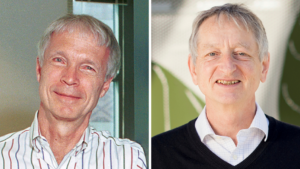
Severe Geomagnetic Storm Threatens Power Grids Amid Hurricane Recovery
A recent severe solar storm has arrived on Earth, intensifying concerns about potential stress on power grids in the wake of two major hurricanes that have devastated parts of the U.S. The National Oceanic and Atmospheric Administration (NOAA) has warned that the effects of this geomagnetic storm could be further complicated by the ongoing recovery efforts from these natural disasters.
What is a Geomagnetic Storm?
The NOAA reported that a Coronal Mass Ejection (CME) erupted from the Sun, reaching Earth around 11 a.m. this Thursday. The Space Weather Prediction Center quickly issued multiple alerts, noting that the Earth was experiencing G4 conditions, classified as severe.
A geomagnetic storm represents a significant disturbance in Earth’s magnetic field, with intensity levels that can fluctuate from low to severe throughout the event. These storms can disrupt various technological systems, impacting power grids, satellites, and GPS technology.
Implications for Power Grids and Communication
As the storm progresses, NOAA has indicated that storm conditions are expected to intensify overnight, leading to potential disruptions in power and radio signals. The agency notified power plant operators and satellite controllers to implement precautionary measures in anticipation of the storm’s effects.
Earlier this week, NOAA had already issued a storm watch following the detection of solar activity that could lead to these disruptions. Notably, the Federal Emergency Management Agency (FEMA) has also been alerted about potential power outages as it continues to manage the aftermath of Hurricane Helene and Hurricane Milton, which recently made landfall in Florida as a Category 3 storm with winds reaching 120 mph.
Comparing Solar Storms: Current vs. Past Events
Despite the severity of this geomagnetic storm, experts do not expect it to exceed the strength of the solar storm that occurred in May, which was the most powerful in over two decades. Rob Steenburgh, a scientist at NOAA’s Space Weather Prediction Center, reassured that Florida is positioned well enough to avoid significant power disruptions unless the storm escalates dramatically.
Steenburgh emphasized the importance of preparedness, stating, “We’re here to let them know so that they can prepare.” Meanwhile, NOAA’s space weather forecaster Shawn Dahl expressed heightened concern regarding the potential effects on power grids, particularly in areas that were recently impacted by Hurricane Helene.
Potential for Spectacular Northern Lights
One of the intriguing side effects of this geomagnetic activity may be the appearance of northern lights, which could be visible as far south as the lower Midwest and Northern California. However, specific locations and times for viewing remain uncertain. Skywatchers are encouraged to capture photographs of the auroras, as smartphones can often detect the lights that are invisible to the naked eye.
The solar storm in May not only resulted in breathtaking auroras across the Northern Hemisphere but also did not lead to any significant technological disruptions, raising hopes for similar outcomes this time.
As the Sun approaches the peak of its current 11-year cycle, increased solar activity is expected, highlighting the need for continuous monitoring and preparedness for future geomagnetic storms.
Stay tuned for updates as the situation develops and as we continue to monitor the effects of this severe geomagnetic storm.

